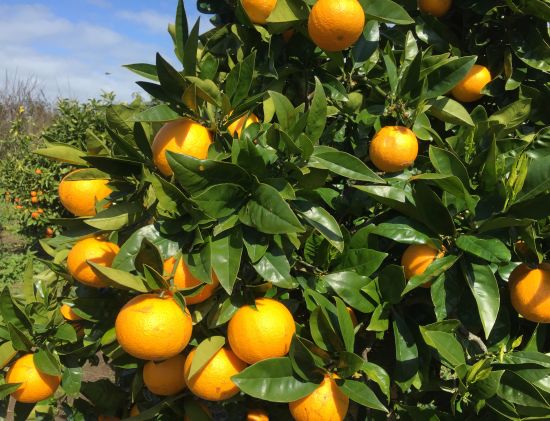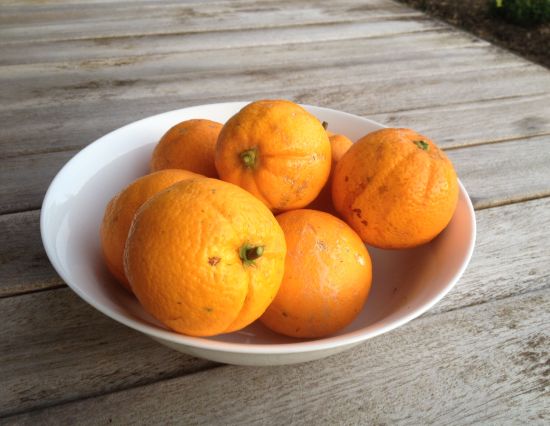
Gisborne is NZ’s largest supplier of oranges with 85% of the national crop grown in this region.
The two main varieties are Navel and Valencia.
Navels are usually the earliest maturing variety of the orange family. They mature in August and hang on the tree till November. They’re large, sweet, seedless fruit that are easy to peel. Navels account for around 75% of the total oranges produced in Gisborne. There are several species of Navel orange – Washington Navel, Parent Navel, Carters Navel and Franklin Navel.
The Valencia variety is popular when Navels are out of season. Harwood Late is closely related to Valencia. They both ripen in November and can carry right through till March.
Copperfields Nurseries in Te Puna, near Tauranga, is a good source for your citrus trees.

Oranges needs 8-12 hours of light per day to produce a good crop of fruit. If the tree is not receiving sufficient light, the crop will be thin or produce nothing at all. Choose an open, sunny position, preferably north to northwest facing, with shelter from strong winds. Wind can distort the shape of leaves, with the damage becoming apparent months later.
Oranges can be planted in late winter or early spring but bare-rooted trees should only be planted in winter.
A fertile, well-drained soil with pH 6-8 is best. Citrus generally are vulnerable to root rot so take care to avoid badly-drained areas. Dig a hole twice the width of the root ball and fill with good quality compost, making a mound for the roots to sit on. If you have clay soil add a couple of handfuls of gypsum to the soil at this stage. Remove the tree from the container and gently tease out the roots so they’re not twisted together. Trim off any damaged roots. Place the tree on the mound. Gently backfill with the soil, making sure there are no air pockets. Make sure the graft union is as high above the soil level as possible without exposing roots. Add the fill soil, mixed with compost, and water thoroughly.
For potted oranges, use a mixture of potting mix, perlite or pumice, and peat. The mixture should be nice and ‘fluffy’. If growing in a container, it’s best to buy a tree that’s grafted onto Flying Dragon rootstock as these trees are less vigorous and will fruit at an earlier age.
In dry areas, water newly-planted trees at least once a week for the first year. Once established, trees need less-frequent watering, but never wait until leaves wilt to water. Water stress can cause developing fruit to drop; prolonged drought causes leaf drop and may kill the tree. Water slowly and deeply.
Apply fertilisers twice yearly in spring and autumn around the dripline of the tree.
We recommend a solution of a handful of Epsom salts in a bucket of water applied to the leaves of the tree, phosphorus and potassium from our Natures Organic Fertiiliser, and nitrogen from sheep pellets or chicken poo. This will significantly enhance tree health and fruit quality.
Container-grown oranges might need more frequent applications of nitrogen since nitrogen may be leached by watering.

Oranges need little pruning apart from removing dead or broken branches, branches growing inwards and very low branches. This improves all-important air circulation. Limit the tree’s size by thinning out fast-growing shoots that outgrow other branches. Thin the branches, rather than shortening them.
Orange trees usually bear in three to four years.
It can be hard to tell when the fruit is ready to pick. Colour is not a good indicator. Oranges can look ripe several months before being ready to harvest or remain green and unappealing even when ripe and juicy inside. You’ll have to taste the fruit to determine when it’s at its peak flavour. Allow fruit to ripen on the tree before picking.
Use secateurs to cut stems close to the fruit when harvesting. Don’t just pull fruit off the tree. Ripe oranges can remain on the tree for up to three months.
Website designed by www.thecornerstorecollective.com
Developed by Richard Hpa